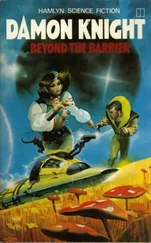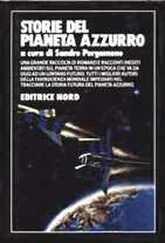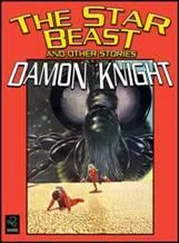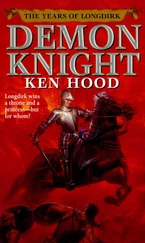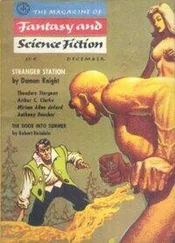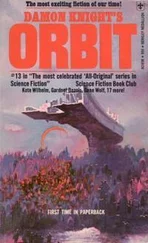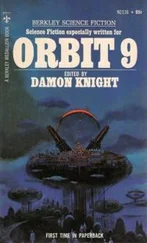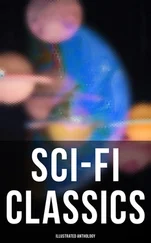Damon Knight - Orbit 21
Здесь есть возможность читать онлайн «Damon Knight - Orbit 21» весь текст электронной книги совершенно бесплатно (целиком полную версию без сокращений). В некоторых случаях можно слушать аудио, скачать через торрент в формате fb2 и присутствует краткое содержание. Год выпуска: 1980, ISBN: 1980, Издательство: Harper & Row, Жанр: Фантастика и фэнтези, на английском языке. Описание произведения, (предисловие) а так же отзывы посетителей доступны на портале библиотеки ЛибКат.
- Название:Orbit 21
- Автор:
- Издательство:Harper & Row
- Жанр:
- Год:1980
- ISBN:0-06-012426-1
- Рейтинг книги:5 / 5. Голосов: 1
-
Избранное:Добавить в избранное
- Отзывы:
-
Ваша оценка:
- 100
- 1
- 2
- 3
- 4
- 5
Orbit 21: краткое содержание, описание и аннотация
Предлагаем к чтению аннотацию, описание, краткое содержание или предисловие (зависит от того, что написал сам автор книги «Orbit 21»). Если вы не нашли необходимую информацию о книге — напишите в комментариях, мы постараемся отыскать её.
Orbit 21 — читать онлайн бесплатно полную книгу (весь текст) целиком
Ниже представлен текст книги, разбитый по страницам. Система сохранения места последней прочитанной страницы, позволяет с удобством читать онлайн бесплатно книгу «Orbit 21», без необходимости каждый раз заново искать на чём Вы остановились. Поставьте закладку, и сможете в любой момент перейти на страницу, на которой закончили чтение.
Интервал:
Закладка:
I checked to make sure Holmes and Charles were in the observatory—they were—then went to the hallway that allowed one to traverse the arc. I located a large elevator door that I had identified in the diagrams and began punching out the code commands I had written down. With the third one the elevator doors slid open. I walked in.
I was on, the interior control panel told me, the second of fourteen floors. I pushed fourteen. The doors closed and I felt the beginning of the elevator’s rise.
The doors opened and I walked out into another passageway. The floors were black tile, the walls and ceilings darkest wood. I walked up and down hallways. Aside from the new walls and ceilings, nothing seemed to be different. Rooms I looked into were empty. I had walked for some time (always keeping in mind the location of my elevator), and was starting to feel disappointed, when I rounded yet another corner: there before me I saw a door that seemed to lead into the vacuum of black space; and in the center of that space was Icehenge.
It was small, and as I hurried toward it across a glass floor, I thought it was a holocube standing on a table. Then I saw that it was made instead of actual pieces of ice, standing in a big sphere of glass that rested on a white plastic cylinder.
The room itself was spherical, a tiny planetarium, with a clear floor bisecting the sphere. There were stars above and below, and the sun, just a few times brighter than Sirius, was just below the floor. It was Pluto’s sky.
The ice liths of the model were nearly transparent, but aside from that it looked like a perfect representation. After a time I circled it slowly, and found an unmarked control console on the other side of the plastic stand.
There were small colored buttons in a row at the top. I pushed a yellow one, and a long narrow beam of yellow laser light appeared in the room. It just touched the top of one of the triangular liths, on the northwest side of the ring, and the top of the shortest lith, on the southeast side...Aligned like this, the slender cylinder covered the sun and turned it yellow.
The other buttons produced laser beams of different colors, marking the sight-lines established by certain pairs of liths, at a certain point in time—one moment in Pluto’s long orbit—and not for observers on the surface of Pluto, since most of the sight-lines extended, in both directions, into space; established only if an elaborate model such as this were constructed. Violet was Sirius. Green was, I guessed, Pluto’s moon Charon. A blue beam extended straight up out of the tallest lith, and defined Castor, Pluto’s Pole Star. And red, stretching across the two remaining triangular liths, plunged into the sword-sheath of Orion: the galaxy Andromeda.
“Mr. Doya?” Holmes’s voice on the intercom again.
“What.” In my dream my father had been telling me a story.
“Captain Pada can leave for Waystation today, if you like.”
“All right.” I felt, all of a sudden, very angry.
“Would you join me for breakfast?”
“... All right. In an hour.”
She wasn’t in the dining room when I got there, so after a short wait I ate breakfast alone. I looked out at Saturn. When I was done with breakfast an image of Holmes, seated in a chair, popped into being across from me. I stared at her eyes.
“Excuse me for saying good-bye to you like this,” she said. “I am indisposed. You are in a holo field yourself, so we can converse.”
“Quite all right,” I said.
“I hope you understand that my desire not to be associated with Icehenge is very serious.”
“You shouldn’t have built it, then,” I said.
“I didn’t.”
“You did,” I said, hoping my image’s gaze met hers. “You built it and then built the false explanation that went with it.” I was trying to control myself. “With all that money, Ms. Holmes, why did you build nothing but a hoax? Why construct just the story of a starship, when you have the means to make the story real? You could have done something great. As it is, you have done nothing but make a fool of an old man on Mars.”
“Not if the Vasyutin explanation stands—”
“Someone will find out. The sooner it’s done the less foolish he appears.” I got up and walked toward the door.
“Mr. Doya!” I turned; her image was standing. “I had nothing to do with it.”
“Then why is that model of it here in your home!”
She smiled, and for an instant I understood that she had meant me to find it. . . . “I told you,” she said. “I am a student of it.”
“If you analyzed the ice in that model,” I said, “you would find it the same as the ice of the liths on Pluto.”
She stared at me, calm and cold. “You may think what you like, Mr. Doya,” she said. “But you will never know.” She and her chair disappeared.
Charles opened the door. “The Io is ready,” he said. “Your luggage is aboard.”
I followed him to the docking bay, crossed into the Io. As I pulled myself to the bridge I felt the clank of our disengagement, and realized I was shaking.
The viewscreen in the lounge had an image of the satellite. Helplessly I hung before the great wheel and watched, still shaking. For a moment, seeing its windows and rails and the observatory, I thought again of an ancient bathysphere. As we moved away I could see the domed floor, a clear glassine bubble; and inside it the tiny figure of Holmes paced around the dome’s perimeter, upside-down it seemed, watching us. Her purposes, I thought. No doubt she had accomplished them all. Then the satellite shrank, with great speed, to a white dot over the ringed eldritch ball. And we were on our way out again.
There was a holo-message transmitter on board the Io. After a month or so of waiting out the long reach back to Waystation, I went into the transmission room. I composed myself, and faced the empty row of chairs that indicated where the audience receiving the message would sit.
“Begin,” I said. The red light in the center chair blinked on.
“Professor Nederland,” I said. “This is Edmond Doya. Our previous interactions have all occurred in the periodicals, but now I want to communicate with you as directly as possible.” I leaned against a table and kicked rhythmically at one of its legs. “The Waystation Institute for Higher Learning is mounting an expedition to Pluto, to make another investigation of Icehenge that will attempt to clear up the present mystery concerning its origins.
“I know you believe that there is no mystery concerning its origins. But—” I stopped, tried to recollect what I was going to say. All of the sentences I had thought of during the month jammed together, demanded to be spoken first. I stood up and paced back and forth, looking frequently to the red dot that represented my great-grandfather.
“But I think you must admit, having read my work, that there is at least the possibility of a hoax. Certainly the possibility. Yet in the present state of knowledge there is no way of telling who really built the monument; I truly believe that. ...” I paused. “All of the serious researchers . . . and theorists of Icehenge, will be invited to join the expedition. As the senior and principal theorist your addition to the company would be valued.”
Somehow that didn’t sound right. I was being too stiff, too artificial: this was an invitation, I wanted to show how I felt. But it was too complex.
“I know that many people have construed my work to be an attack on you. I assure you, Professor Nederland, that isn’t true! I admire the work you did, it was a good investigation, and if someone was deliberately misleading you . . . there was no way for you to know. And I don’t agree that believing it a hoax destroys the monument’s esthetic worth. Vasyutin or not, the monument is still there. Human beings still constructed it. Emma’s story still exists, no matter who wrote it. . . .”
Читать дальшеИнтервал:
Закладка:
Похожие книги на «Orbit 21»
Представляем Вашему вниманию похожие книги на «Orbit 21» списком для выбора. Мы отобрали схожую по названию и смыслу литературу в надежде предоставить читателям больше вариантов отыскать новые, интересные, ещё непрочитанные произведения.
Обсуждение, отзывы о книге «Orbit 21» и просто собственные мнения читателей. Оставьте ваши комментарии, напишите, что Вы думаете о произведении, его смысле или главных героях. Укажите что конкретно понравилось, а что нет, и почему Вы так считаете.


